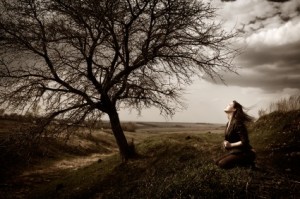
Earlier this year, we blogged that neighbours can cut tree branches that overhang onto their property, but cannot enter their neighbour’s property to do so without permission. (This got lots of reaction from readers.) This may be a pretty straightforward application of property law, but it doesn’t make sense in the real world. Trees are living beings, not artificial structures, and may not survive if one neighbour whacks branches and roots of the tree, from his/her side of the property boundary. Even if the tree survives, in the short run, it may become lopsided and dangerous, especially in the increasingly intense storms that climate change brings. Once the tree has been made dangerous, either property owner (or the municipality) may be able to demand that the tree be cut down.
But what if the innocent owner loves the tree and wants to protect it? Or even just cares about how much the tree adds to their property value, and reduces their energy costs. Are they really helpless? Unfortunately, the answer is close to yes – yet another clear sign that we urgently need to change the law on trees.
A number of cases have dealt with the ownership of border trees, and with the damage done to them by neighbours. As mentioned above, almost all decisions permit a neighbour to trim or cut offending branches or roots, as long as he/she does not trespass, even if this harms or kills the tree. Occasionally, the courts suggest that this right is not absolute, and does not permit injury imposed “needlessly” to the tree. But even if trees are illegally damaged or destroyed, the compensation awarded has been inadequate.
Theoretically, some laws are supposed to protect trees. For example, Ontario’s Forestry Act makes trees whose trunks straddle property boundaries common property of both landowners. That ought to mean that both owners are entitled to protect the tree from damage. As well, some municipal by-laws (e.g., Toronto’s) impose restrictions on damage to trees of a certain size. But neither is actually effective in practice.
In principle, anyone who injures or destroys a tree growing on the boundary between adjoining lands without the consent of the land owners commits an offence under the Forestry Act and is liable to a fine of up to $20,000 and/or to imprisonment for up to six months. But, as far as we can tell, this section has never been enforced. There is also a risk that the courts will interpret this, as they did some older laws, to mean that either owner can consent to the destruction of a boundary tree. That would destroy the point of the section, and leave boundary trees with no real protection at all.
The only reported case under the Forestry Act is a hugely expensive prosecution by the Regional Municipality of Halton of George Vastis, a man who slashed a planned golf course through an Environmentally Sensitive Area and protected woodlot. Court testimony emphasized the enormous seriousness of his actions:
the lands in question are part of one of the largest remaining forested units below the Niagara Escarpment and that the tree removal did great damage to this section of what was specifically designated as an Environmentally Sensitive Area. It was, in her opinion, the worst destruction of habitat she has seen in her twenty-five years in the field…
…the work was done surreptitiously in an area which could not be seen from the roadway, and which continued even after Stop Work Orders had been delivered.
These were very brazen offences which were committed solely for personal gain, and in flagrant disregard of the laws and authorities entrusted to protect these precious and rare natural resources.
Mr. Vastis claimed that he was just harvesting wood for his own use, a claim rejected by the courts. He also continued to cut trees after several warnings, including a formal stop work order. He was eventually convicted on eleven counts (one for each day, not for each tree), but fined only $3,000 per count, for a total of $33,000. This is trivial in comparison to the profit he stood to make by building a golf course. (This amount was also trivial in relation to the cost to the Region of the prosecution, which dragged on for five years, counting a twelve day trial, motions and appeals. It’s hard to imagine what Mr. Vastis paid his own lawyers.) In addition, Mr. Vastis was ordered to replant the area at an estimated cost of $122,260, but hadn’t planted a single tree 5 years later.
Municipal bylaws have generally been just as ineffective. Most municipalities’ tree bylaws don’t even protect private trees, only those on public property. The City of Toronto brags loudly about its Private Tree Bylaw, but also does little to enforce it. Theoretically, Toronto’s by-law prohibits injury to any tree that has a diameter of 30 centimetres or more measured at 1.4 metres above ground level, without a permit. Exceptions include removal of an imminently hazardous tree and pruning a tree in accordance with good arboricultural practice to maintain the health of the tree. A person who contravenes the by-law is liable to a minimum fine of $500 per tree; the maximum fine is $100,000 and a person may also be liable to a “special fine of $100,000”. In practice, though, the City happily issues vaguely worded permits to damage even huge, rare and valuable trees. It also issues building permits for buildings that will damage such trees. And it rarely prosecutes anyone who breaches the bylaw. When the forestry department tried to actually protect some trees from development, Council quickly beat a hasty retreat.
The Ontario Urban Forest Council has lots more examples of these problems, and of their terrible consequences. We’ll continue writing about this shameful situation. If you have a story which illustrates the problem, please write and tell us about it.